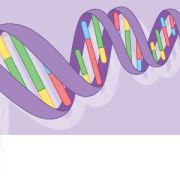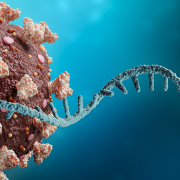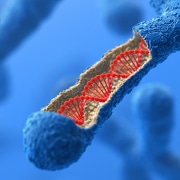How the UK is cracking the coronavirus code
In the second part of our Covid-19 special, we look at the genomic science and technology behind a new UK consortium to improve understanding of the virus
Last month, the government made clear the vital role genomics is playing in the current Covid-19 pandemic when it launched the Covid-19 Genomics UK Consortium – a collaborative initiative to tackle the outbreak using state-of-the-art genomic techniques.
Following last week’s article, we take a more detailed look at some of the techniques being used in the project, and how they will contribute to efforts to combat the virus.
National collaboration
Backed by the UK government, the consortium will see 13 sites across the UK sequence virus genomes from confirmed Covid-19 patients, with data analysed by experts at the Wellcome Sanger Institute.
Ideally, standardised methods and protocols would be used across all sites, but to get the project up and running quickly, each of the 13 will use methods and protocols that are familiar to them. However, it is vital that there will be opportunities to share and collaborate, to ensure the best methods and tools are used.
International standards
One approach being adopted by a number of sites has been developed by the ARTIC Network, an international project funded by the Wellcome Trust that aims to put genomics at the heart of infectious disease control. Using experience from previous outbreaks, such as the 2013-16 Ebola epidemic, the network develops tools to produce rapid real-time and sharable genomic data that can be acted on by public health officials.
In January, the network released a suite of resources specifically for the rapid sequencing of Sars-CoV-2 based around nanopore technology. The freely available material covers everything from sample preparation through to bioinformatic pipelines. In addition to being used within the UK consortium, the protocol has also already been adopted by several countries to produce their first Sars-CoV-2 genomes. In some cases, data has been produced within 8 hours.
But what are the features of the protocol, and how will it support the UK consortium’s goal to “deliver large scale, rapid sequencing of the cause of the disease”?
End-to-end workflow
The ARTIC Network offers a free start-to-finish protocol ready for use in labs. What this means is that lengthy set-up processes such as optimisation and validation are not required, and therefore laboratories can get up and running quickly and begin generating vital data.
Targeted approach
When sequencing clinical samples, the virus – and therefore its RNA, the genetic material needed to read the genome – can be in low abundance. Furthermore, other components will be present in the samples, such as non-viral material, that could affect results.
For this reason, the ARTIC Network protocol takes a targeted approach, which picks out and amplifies only the viral genetic material. This not only isolates the virus, but also ensures enough starting material for sequencing.
Long-read sequencing
Although adaptable to other next-generation sequencing platforms, the ARTIC protocol has been optimised with single-molecule methods, like nanopore sequencing, in mind.
This type of sequencing is capable of reading much longer stretches of DNA compared with other platforms. Longer reads reduce the chance of error, as there are fewer fragments to piece back together, making assembly easier. Equally, this method is effective at sequencing challenging genomic regions, such as large areas of repetitive DNA.
Integrated and efficient
The protocol also allows the sequencing process to be incorporated into the usual diagnostic pathway without additional delay. University of Birmingham researcher and ARTIC Network member Dr Josh Quick, who developed the Sars-Cov-2 protocol, explains: “We currently sequence RNA left over from diagnostic testing, so no additional samples are needed and the sequence can be done in under 24 hours. The quicker we can do the sequencing, the more useful the information, as outbreaks are rapidly developing situations.”
Why sequencing the virus is so important
It is hoped that genomic data generated from the consortium will show how the Sars-CoV-2 virus is changing from host to host and across a geography – information that could help in managing this outbreak.
Quick explains: “The data can be used to classify cases into clusters, which is very useful information for ruling in or out likely routes of transmission, such as import from another country or community transmission. We can also use the data to determine how effective interventions have been, such as closing schools or banning non-essential travel.”
As the UK looks to control and combat the Covid-19 outbreak, and move towards implementing a workable ‘exit strategy’, it’s clear that genomics will continue to be a vital part of its approach.
–









